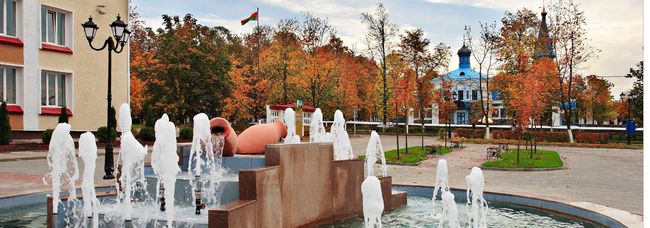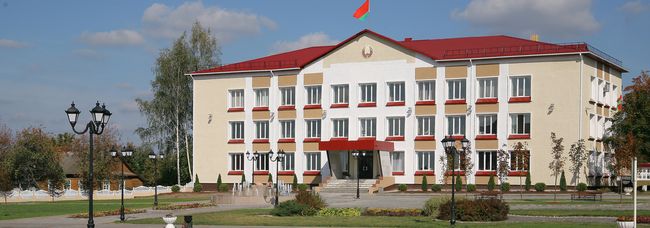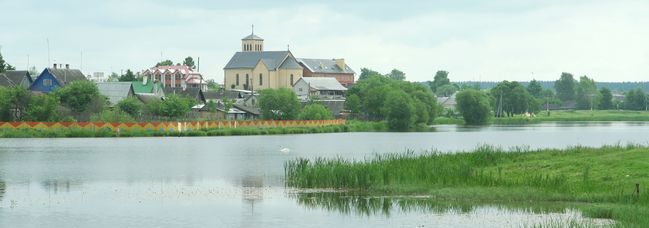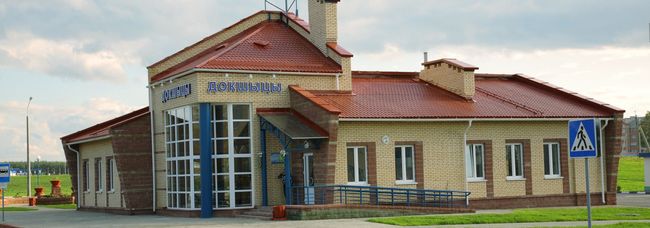Dokshitsy Regional Executive Committee
Address: 31 Leninskaya Street,
Dokshytsy 211722
Phone:
8 (02157) 3-25-10 from 8.00 to 17.00
Fax:
8 (02157) 3-25-11
E-mail:
rikdok@vitebsk.by










Address: 31 Leninskaya Street,
Dokshytsy 211722
Phone:
8 (02157) 3-25-10 from 8.00 to 17.00
Fax:
8 (02157) 3-25-11
E-mail:
rikdok@vitebsk.by










The time when a town is first mentioned in chronicles is considered to be the date of its foundation. Unfortunately, the exact date of foundation of Dokshitsy is unknown. The first mentioning of the town dwellers - doxyczahe - is found in the record of Great Duke Vitovt (1407) when Dokshitsy countrymen were transferred to Vilnya governor Voitekh Manivid.
After the 1565-1566 administration reform, the lands of the modern-day Dokshitsy region were annexed to Minsk district.
In the late 16th – early 17th century the Catholic Church had dominating influence. In connection with that in 1608 Stanislav Kishka (co-owner of Dokshitsy lands) founded a wooden Roman-Catholic Church in Dokshitsy. In 1682 Konstantin Stanislav Pats founded a Roman-Catholic Church of Bernardians in Berezino. After the second partition of the Rzecz Pospolita in early 1793 Dokshitsy region was annexed to the Russian Empire.
During the 1812 war Dokshitsy were occupied, looted and partially burned by the French troops.
By the mid 19th century the town had two manufactures: a distillery and a honey factory. After the abolition of serfdom three distilleries, one brewery and a sugar factory appeared in the region. Many estates had wind and water mills. Twice a year Dokshitsy held fairs.
According to the population census of 1897 the population of the region totaled 125,725 people. Starting from the second half of the 19th century the region opened nine public colleges (Dokshitsy Higher Romanov College was opened in 1863) and church schools. After the 1905-1907 revolution a one-form Jewish women’s college was opened in Dokshitsy. The town also had a professional puppet theater - Batleika. The first railway station Seslavino (later Krulevshchizna) was built.
The first stage of peaceful Soviet changes in the land of Dokshitsy after the October revolution was very brief. In February 1918 the land was occupied by German troops, in August 1919 — Polish ones. After the Riga Peace Treaty 1921 the Soviet-Polish border separated the region in half, leaving part of it in Western Belarus, Vileika Voivodship of Disna Province.
The Soviet part of the region became Begoml region of Borisov canton on July 17, 1924. The region was subdivided into nine rural councils. V.I. Grishkevich became the first chairman of the Begoml region executive council.
In the 1930s the status of the region as well as the status of the district town changed several times. September 27, 1938 saw Begoml become an urban community, with the rural council reorganised into a town council.
The liberatory campaign of the Red Army in Poland started on September 17, 1939. A day later the entire region was far behind the frontline. In December 1939-January 1940 Dokshitsy region of Vileika canton was set up alongside with Begoml region of Minsk canton.
The first elections to the Dokshitsy Regional Council of Deputies took place in December 1940.
In the early days of the Great Patriotic War the region was totally occupied by the Nazi. Over 3,500 local residents fought in ranks of the Red Army, guerrilla units and underground resistance teams. There were nine guerrilla brigades and independent regiments in the region. In December 1942 Begoml region was liberated from the Nazi by the guerrilla brigade Zheleznyak and remained a guerrilla-controlled area up till the arrival of the Red Army.
The war devastated the economy of the region. The Nazi burnt down 107 villages, including three villages — Shunevka, Azertsy, Zolotukhi — together with their residents. Over 20,000 people perished or one in third of the region dwellers.
The region was liberated on July 2, 1944. Two days later the local authorities resumed operations.
On January 20, 1969 Begoml region was attached to Dokshitsy and Lepel regions. Borders of Dokshitsy region expanded on January 6, 1965 to remain the same up till now.